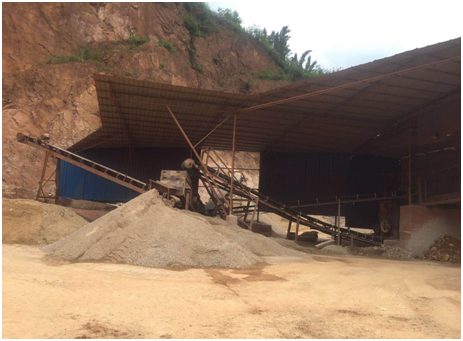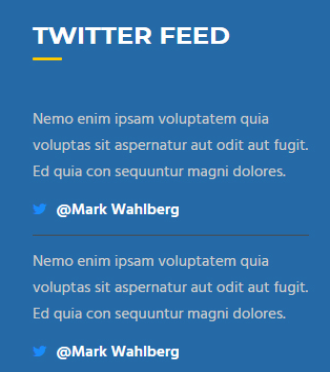|
Introduction of three common feldspar mines magnetic separation process
Feldspar is an aluminosilicate mineral of alkali metals or alkaline earth metals such as potassium, sodium, calcium, and barium, and is one of important rock-forming minerals. Pure feldspar rarely exists in nature, and even minerals called "potassium feldspar" may symbiotic or mix with some albite. According to the type of deposit, feldspar can be divided into Baigangyan feldspar, granite feldspar, feldspar sands and so on. Due to the different types of ore deposits and the nature of the ore, the beneficiation process of each feldspar is also different. Common feldspar beneficiation processes mainly include hand separation, desilting, magnetic separation, re-selection, flotation and a combination of multiple beneficiation methods to remove quartz, iron, mica and other accompanying organisms.
1. Process of beneficiation of Baigangyan feldspar The Baigangyan-type feldspar minerals are uniformly mineralized and of stable quality, of which potassium feldspar and albite account for about 50%-60%. The gangue minerals are mainly quartz, mica and iron-bearing minerals. Generally, this type of deposit needs to be processed by flotation method to obtain feldspar concentrate. 1) Crushing operation: the raw ore is crushed to about 20mm by coarse crushing (jaw crusher) and medium crushing (cone crusher); 2) Grinding and grading operation: after crushing, the crushed product is wet-milled to -20 mesh in a closed loop operation composed of rod mill and drum screen, and then the cyclone and spiral classifier are used to remove the fineness of -200 mesh. Granular clay impurities, -20 mesh-+200 mesh grade materials are sent to the flotation operation. 3) Flotation operation: remove impurities such as mica, iron minerals and quartz. In the first stage, mica is obtained by flotation with a cationic collector (mainly an amine collector) in a weakly acidic medium. The mica is purified by flotation and wet-screened with an 80-mesh vibrating screen. Wet mica larger than 80 mesh is sold to the mica processing plant; in the second stage, the anionic collector (mainly sulfonated oil) is used to remove the Iron minerals; in the third stage, separation of feldspar and quartz is carried out with a combined collector in a weakly alkaline medium. Of course, the flotation operation is adjusted appropriately according to the mineral composition. If the content of mica in the grinding product is very small, it can go beyond the first stage flotation and go directly to the second stage iron removal flotation; if the grinding product undergoes the first stage and second stage flotation operations, the iron and quartz content can be To meet the requirements of some glass factories, the third stage of flotation separation of feldspar and quartz can be omitted, so that the product can be directly used as glass batching by the formation of feldspar silica sand mixture.
2. The beneficiation sand beneficiation process The main components of feldspar sand are quartz and feldspar, which are mainly formed by the accumulation of some granite and feldspar-containing metamorphic rocks during long-term weathering. The quality of feldspar sands is not as good as that of pegmatite feldspar deposits, but because of the omission of crushing and grinding operations in the mining process, the cost of beneficiation is relatively low, and it is also one of the important sources of feldspar concentrates. The beneficiation process of feldspar sand is relatively simple. The principle flow of beneficiation mainly includes ore washing, scrubbing, grading, magnetic separation, flotation, etc.; the grading products need to be determined according to the mineral composition for subsequent sorting operations. The above are the common three types of feldspar ore dressing process. Before conducting feldspar beneficiation, each mine must determine the properties of the ore chemical composition, mineral composition, ore structure and structure, particle size composition, ore density, and ore relative grindability, and scientifically select the single or combined process recommended by the ore dressing test report Process to remove quartz, iron, mica and other semi-live minerals, effectively recover feldspar concentrate rich in potassium and sodium.
3. Granite feldspar beneficiation process Granite-type feldspar is a coarse-grained acidic deep igneous rock with a finer grain size than pegmatite, quartz content of about 25%-30%, mica and iron-containing minerals about 10%. Feldspar is its main component (alkaline), that is, a crystalline feldspar composed of potassium feldspar and albite in a certain ratio. Granite inlay has a fine grain size, so the cost of grinding and beneficiation is relatively high. The granite-type feldspar beneficiation process is roughly the same as the Baigangyan beneficiation process. The principle beneficiation processes include crushing, grinding, grading, iron removal, mica, and flotation (quartz, feldspar separation) operations.
|







